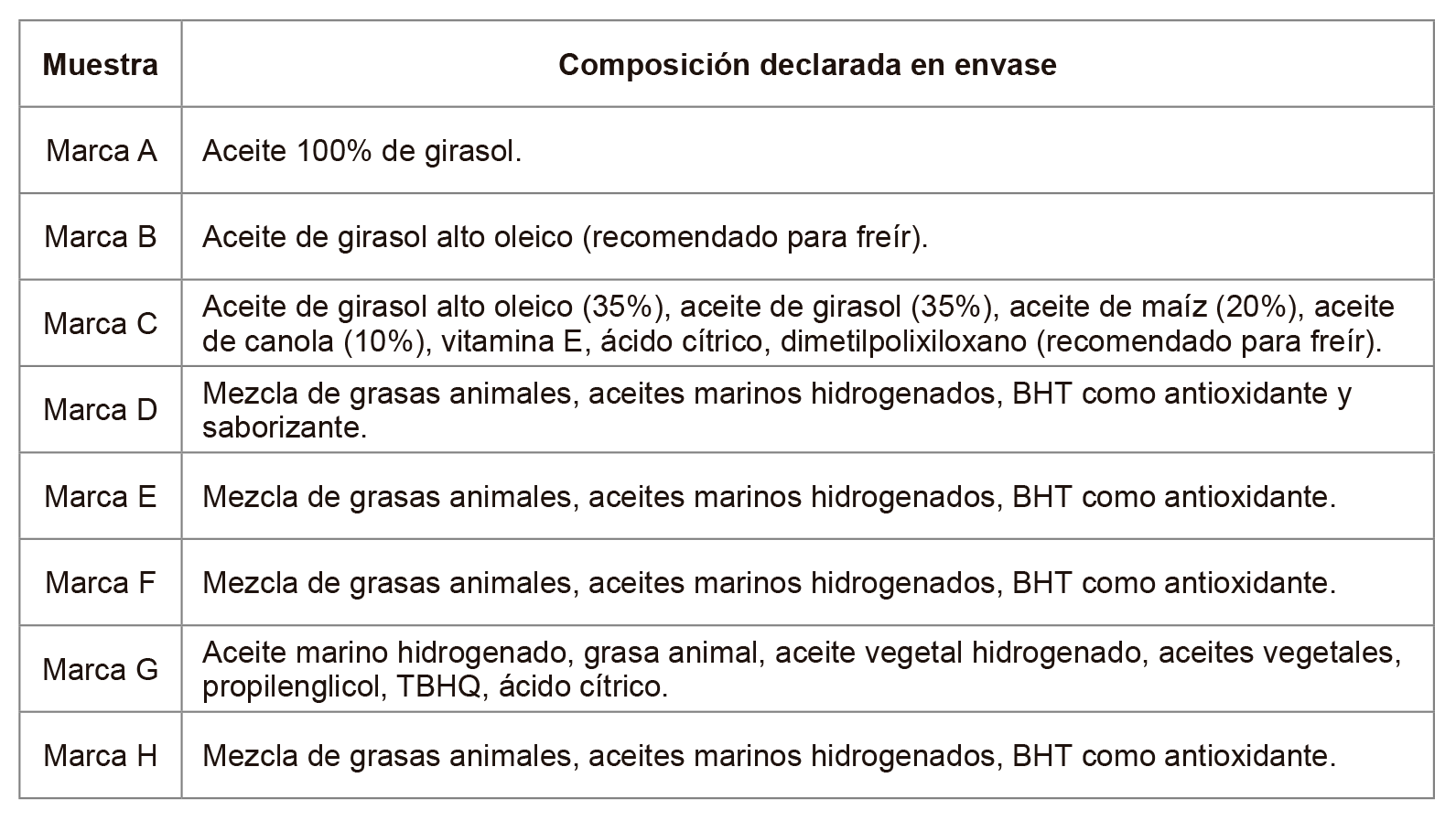Comportamiento del perfil de ácidos grasos de aceites y materias grasas hidrogenadas sometidos a calentamiento prolongado
Keywords:
hydrogenated shortenings, sunflower oil, fatty acid profile, trans fatty acidsAbstract

Frying is highly applied in both industrial and household fields. Since it involves heating an edible oil or fat to temperatures near 200°C, complex physical and chemical changes occur. In Chile, hydrogenated shortenings are used for frying, which have shown high trans fatty acids (TFA) content. The objective of this work was to determine changes in the fatty acid profile, with emphasis on TFA, during heating of different types of hydrogenated fats and oils. For this, seven types of fat and sunflower oil , considered as a control , were subjected to a heating cycle for 50 h and were evaluated at 0, 10, 20, 30, 40 and 50 h.The fatty acids profile, including trans fatty acid, were determinate by GLC according to the UNE 5509 Norm. Results demonstrated that all studied fats showed changes in fatty acid profile during heat treatment, with decrease of polyunsaturated fatty acids and increase or maintained constant the monounsaturated and saturated fatty acids. Trans fatty acids showed significant content of hydrogenated fats (20%), which remained constant throughout the heating. The sunflower oil and high oleic sunflower oil were shown to be the most suitable for frying as it showed no presence of TFA and remained suitable for use up to 40 h of heating.
Downloads

Downloads
Published
How to Cite
Issue
Section
License

This work is licensed under a Creative Commons Attribution-NonCommercial-ShareAlike 3.0 Unported License.
Aquellos autores/as que tengan publicaciones con esta revista, aceptan las Políticas Editoriales.










.jpg)




